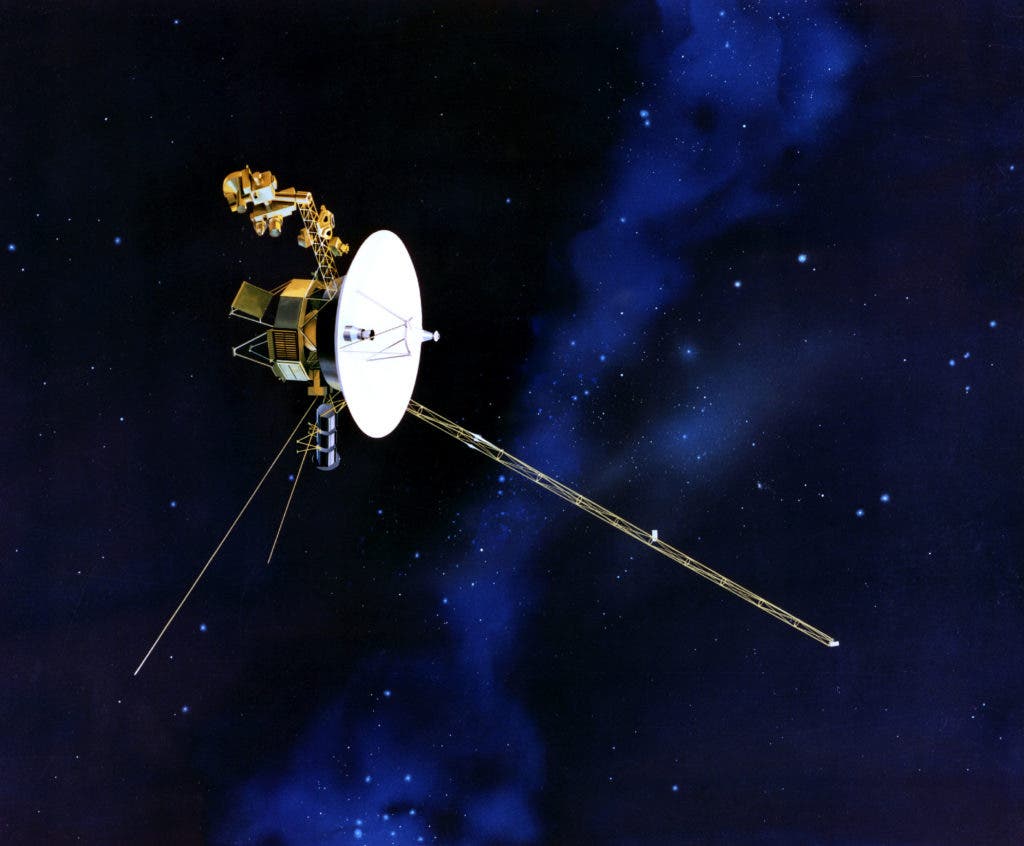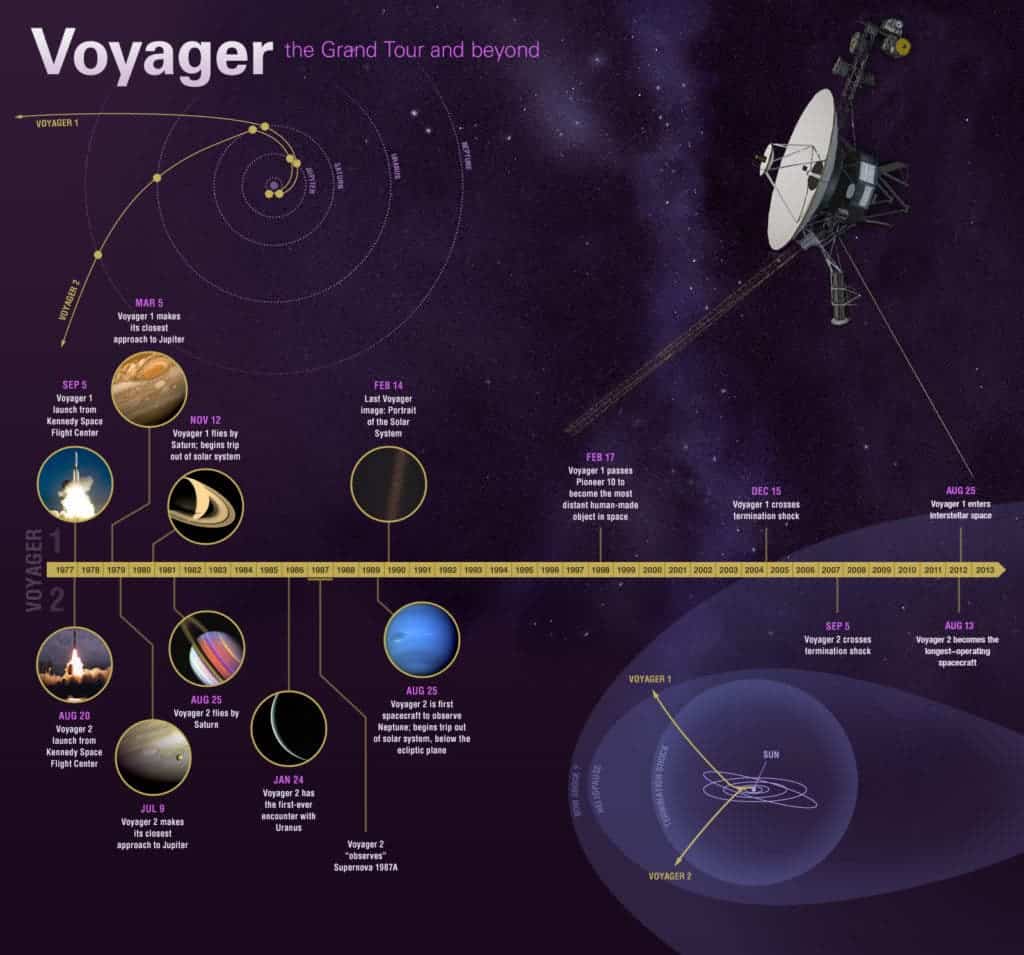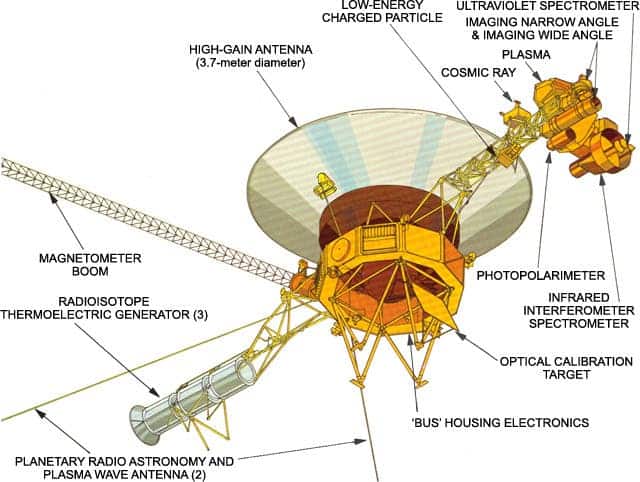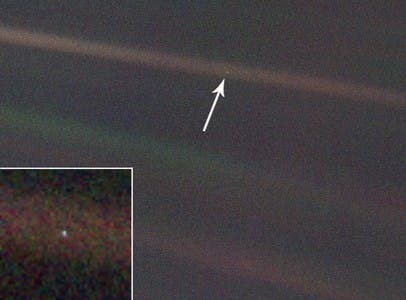
Tuesday marked exactly 40 years since Voyager-1 left Earth on a quest to study the outer solar system and beyond. Paradoxically, the probe launched on a NASA Titan IIIE/Centaur rocket two weeks after its twin Voyager-2 embarked on a similar journey.
The mission that changed everything
Both probes were initially supposed to be part of a two-planet, 5-year mission exploring Jupiter and Saturn. The NASA engineers, however, designed them to be so sturdy that the mission was extended to 12 years and four planets and their rings and moons. This timeline was yet again extended. In fact, both Voyagers are still operational to this day.
Voyager-1 is so far away from Earth that astronomers reckon it officially left the solar system in 2012, after the probe crossed the heliosphere boundary. The heliopause is where interstellar pressure overcomes that produced by solar wind and the sun’s magnetic field.

Essentially, Voyager-1 is now in interstellar space — the farthest anything man-made has ever traveled. Right now, a signal from Voyager 1, traveling at the speed of light, takes more than 19 hours one way to reach Earth.
[panel style=”panel-success” title=”Mission status” footer=”Voyager mission status is updated every five minutes by NASA. “]
| Voyager 1 | Voyager 2 | |
|---|---|---|
| Launch Date |
Mon, 05 Sept 1977 12:56:00 UTC
|
Sat, 20 Aug 1977 14:29:00 UTC
|
| Mission Elapsed Time |
40YRS
00DAYS
23HRS
45MINS
58SECS
|
40YRS
16DAYS
22HRS
12MINS
58SECS
|
| Distance from Earth |
20,887,900,195 km
|
17,181,037,650 km
|
|
139.62698866 AU
|
114.84814302 AU
|
|
| Distance from Sun |
20,892,850,767 km
|
17,253,445,448 km
|
|
139.66008119 AU
|
115.33215926 AU
|
|
| Velocity with respect to the Sun (estimated) |
16.9995 kps
|
15.3741 kps
|
| One-Way Light Time |
19:21:14
(hh:mm:ss)
|
15:55:09
(hh:mm:ss)
|
[/panel]
Given its track record, how far can Voyager travel before it eventually breaks down? According to NASA, the Voyager probes will have less than a decade left in their operational lifetime. Were it not for some particular parts, the nuclear-powered spacecraft could have communicated with Earth for centuries.
“Barring any serious spacecraft subsystem failures, the Voyagers may survive until the early twenty-first century (~ 2025), when diminishing power and hydrazine levels will prevent further operation. Were it not for these dwindling consumables and the possibility of losing lock on the faint Sun, our tracking antennas could continue to “talk” with the Voyagers for another century or two!”
That doesn’t mean the Voyagers will stop. They’ll just stop communicating at some point. “The current velocity of 38,000 MPH will not change. It will go forever,” said NASA scientists in a Reddit Ask Me Anything session.
An incredible feat of human engineering

In any event, this is all super impressive for 1970s technology and engineering. The best minds of the time were busy making the spacecraft as reliable as possible and we all know now they did a fantastic job.
Each probe is made out of no fewer than 65,000 parts, not counting the smaller components like transistors. Since a color TV set contains about 2,500 equivalent parts, each Voyager has the equivalent electronic circuit complexity of some 2,000 color TV sets.
Despite an iPhone being millions of times more powerful than all of NASA’s Apollo-era computing power combined, the Voyager computers were able to do incredible things with scarce resources. A car key has more computing power than Voyager.
“The Voyager system is one of the most sophisticated ever designed for a deep-space probe. There are seven top-level fault protection routines, each capable of covering a multitude of possible failures. The spacecraft can place itself in a safe state in a matter of only seconds or minutes, an ability that is critical for its survival when round-trip communication times for Earth stretch to several hours as the spacecraft journeys to the remote outer solar system,” according to NASA.
Science, forever in Voyager’s debt

Beyond traveling farther than anything we ever made, the Voyager mission has provided incalculable scientific value.
The probes were the first to tour Jupiter, Saturn, Saturn’s rings, as well as the larger moons of Jupiter and Saturn. Later, in the extended mission, the Voyagers fly-byes of nearby planets Uranus and Neptune, and since have explored all of the giant outer planets of the solar system, including 48 of their moons, and all their unique systems of rings and magnetic fields.
All the information the probes beam back “has revolutionized planetary astronomy, helping to resolve key questions while raising intriguing new ones about the origin and evolution of the planets in our solar system,” said a NASA spokesman.
“It not only changed what we know, but how we think. It’s about exploration of the unknown, and redefining what we can and cannot do as humans,” Thomas Zurbuchen, NASA’s deputy administrator, said Tuesday during a news conference on the mission.
An ambassador for mankind
The famous ‘Golden Record’ was mounted on both probes on the off chance these would be encountered by an intelligent alien race. Each record conveys sounds, images, and greetings from the people of planet Earth. The audio recording ranged from the sound of rain to samples of Beethoven and Mozart, Chucky Berry and Blind Willie Johnson.
“The spacecraft will be encountered and the record played only if there are advanced space-faring civilizations in interstellar space. But the launching of this ‘bottle’ into the cosmic ‘ocean’ says something very hopeful about life on this planet,” Carl Sagan famously said.
Now, 40 years later, some of the artists who were associated with the production of the original discs, and an actor who had a fictional encounter with a Voyager probe on film, are celebrating the project in their own way.
“When you think of the mysterious void that’s out there and what little we know, and we’re sending a message out and it goes out into the stars,” remarked William Shatner, who as Captain James T. Kirk in 1979’s “Star Trek: The Motion Picture” came across a Voyager probe.
Following a Kickstarter campaign that raised $1.4 million, Ozma Records will release a vinyl box set featuring three translucent gold LPs containing the same greetings, music, and sounds as archived on the Golden Record, as reported by Collect Space. The collectible also comes all of the images included on the original disc, along with a new essay by Timothy Ferris, the original producer of the Golden Record.
“There are so many revelations hidden deep within the 27 pieces of music, the sound essay, and the greetings from humans and the humpback whales,” said Ann Druyan, the creative director of the Voyager Interstellar Message, as a part of the Smithsonian anniversary event on Tuesday.
Looking out into the future
When these probes first set out on their epic journey, what we knew about the Universe was but the tip of the iceberg. We’ve since found thousands of alien planets, some of which potentially habitable. Everyone used to think that the Jovian moons were dead lumps of rock and ice but there’s tangible evidence some, like Europa or Enceladus, may actually harbor life in a deep ocean covered by a thick blanket of ice.
We’ve also come to know that most of the energy and matter in the universe is invisible! It turns out that roughly 68% of the universe is dark energy while dark matter makes up about 27%. The rest – everything on Earth, everything ever observed with all of our instruments, everything you would call normal matter – adds up to less than 5% of the universe.
Perhaps another four decades from now this elusive mystery will too have its veil lifted. It’s pioneering missions such as Voyager that will bring us closer to unraveling the universe’s greatest secrets, one a time like the layers of an intricate cosmic onion. And what a tearjerker the last layer must be.
“From many points of view, Voyager really represents humanity’s most ambitious journey of discovery,” Voyager principal investigator Edward Stone said. “It’s really I think legacy”.


